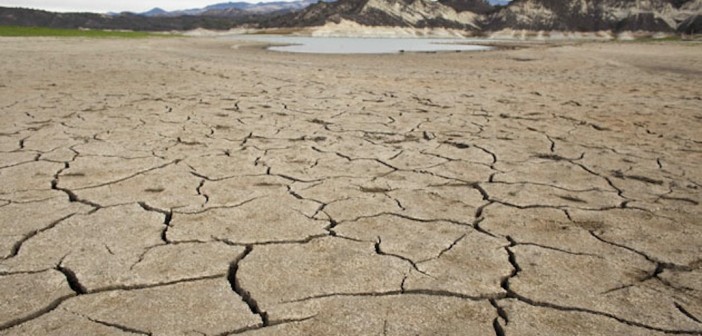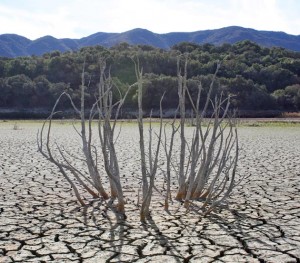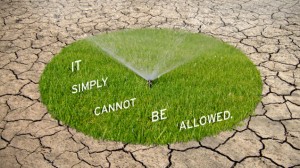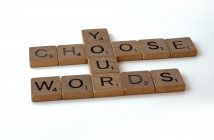5 Facts You Need to Know about the California Drought
-
California is actually in a drought state of emergency. Emergency!
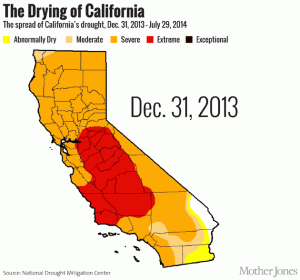
Click on this picture to see California’s drought progression from December 31, 2013 until July 29, 2014 (Source: climatedesk.org)
Lack of sufficient precipitation in the last three years has made it impossible to return to the status quo. In January of 2014, Governor Jerry Brown declared a drought state of emergency. In December 2013, only central California was in extreme drought, the rest of the state was in a state of severe drought. Now, ten months later, roughly half of the state of California is in a state of exceptional drought! The majority of the rest is in extreme drought.
-
Lake Cachuma: one of the world’s most at-risk lakes
According to AccuWeather.com, Lake Cachuma, Santa Barbara County’s main drinking water source, ranks second in the world as the most at-risk lakes to dry up. It serves an approximate 200,000 people, but with the last three years’ low rainfalls, the lake’s water level has shrunk to 39.3 percent. In 2011, Cachuma Lake was full and was even spilling water over the dam. The other four most rapidly shrinking lakes are the Aral Sea, located between Kazakhstan and Uzbekistan, Lake Oroumieh, located in Iran, The Dead Sea (a.k.a. The Salt Sea) in between Jordan, Palestine, and Israel, and lastly Lake Waiau in Hawaii.
-
Your diet has a much greater impact on wasting water than you might think
Cutting back on household water sure has an impact on the drought. Did you know that most of our water resources go toward agriculture? While only 4 percent of California’s water footprint is attributed to personal use, a stunning 80 percent of California’s water footprint goes to agriculture! So how can we citizens really help to make an impact? The Water Education Foundation estimates that 2464 gallons of water are needed to raise one pound of Californian beef. More water is saved by replacing one pound of beef with plant food than by not showering for six months! Instead of not showering, we could all reduce or even eliminate our meat eating habits and save a drastic amount of water.
-
In the Continental United States, there is as much acreage of grass lawns as there is of wheat
Owning a lawn used to mean that you were one of status, that you can just “throw away” your money just to have a massive amount of grass on your property. Today, grass lawns are the norm for almost anyone. It is a great area to relax on, and a perfect place for children to play on. But if you think about it, lawns have become obsolete, yet they are everywhere. And everyone continues to just watch the grass grow. According to research scientist Cristina Milesi, there are more than 40 million acres of turf lawn in the Continental U.S., as much as the United States’ fourth largest crop: wheat. Usually, outdoor water use accounts for 50-75 percent of the total residential water use. In this extraordinary drought situation, we need to prioritize: do we really need to water our lawns?
-
Regardless of El Niño this year, it looks like the drought will last at least through 2015 and beyond
Even though the drought has been going on for a few years now, 2014 has been driest year of all, according to a study by the University of California, Davis, resulting in the lowest water availability for California agriculture in history. Statistically, the study reports, 2015 will also be a dry year with no better outlook on 2016. The Central Valley, the most endangered agricultural area in California, would loose crops of an estimated total of $1 billion per year.

